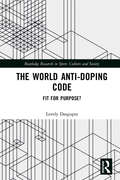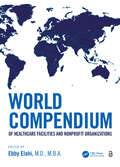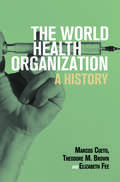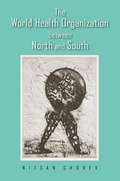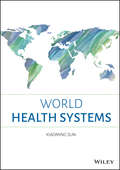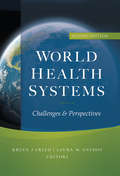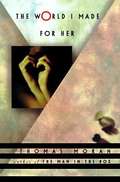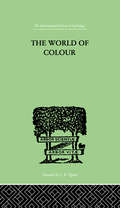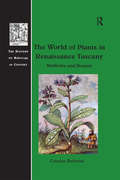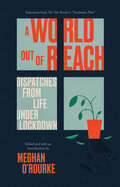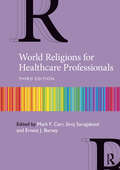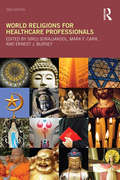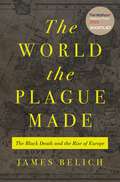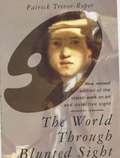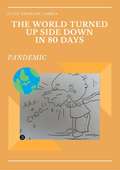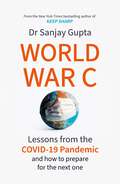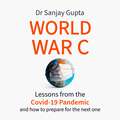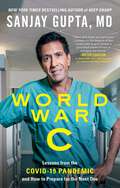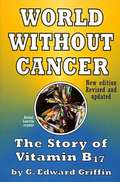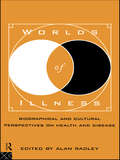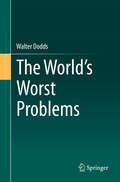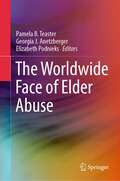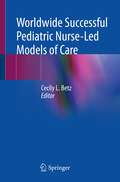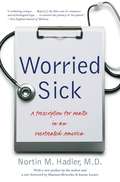- Table View
- List View
The World Anti-Doping Code: Fit for Purpose? (Routledge Research in Sport, Culture and Society)
by Lovely DasguptaFollowing the recent doping scandals that have brought the highest echelons of international sport into disrepute, this book examines the elitism at the core of the World Anti-Doping Agency and considers how the current World Anti-Doping Code might be restructured. Analyzing the correlation between the commodification of sports and doping, and the role WADA plays in this context, it takes into consideration the perspectives of non-elite athletes as well as athletes from developing countries which have previously been excluded from the anti-doping discourse. It offers recommendations for improving the coordination and implementation of the World Anti-Doping Code and argues for the creation of a more inclusive anti-doping regime. This is an important resource for students of sports law, sports management and sports ethics, as well as vital reading for sports administrators, sports sociologists, sports policy makers, sports lawyers and arbitrators, as well as athletes themselves.
World Compendium of Healthcare Facilities and Nonprofit Organizations
by Ebby ElahiWorld Compendium of Healthcare Facilities and Nonprofit Organizations is the most comprehensive index of critical information on healthcare facilities and nonprofits in 72 low and lower-middle-income countries as classified by the World Bank. Presented in an easily accessible format and organized in 72 country chapters, the compendium allows stakeholders to better identify where healthcare services are available and where additional resources are needed.
The World Health Organization: A History (Global Health Histories)
by Marcos Cueto Theodore M. Brown Elizabeth FeeAccording to its Constitution, the mission of the World Health Organization (WHO) was nothing less than the 'attainment by all peoples of the highest possible level of health' without distinction of race, religion, political belief, economic status, or social condition. But how consistently and how well has the WHO pursued this mission since 1946? This comprehensive and engaging new history explores these questions by looking at its origins and its institutional antecedents, while also considering its contemporary and future roles. It examines how the WHO was shaped by the particular environments of the postwar period and the Cold War, the relative influence of the US and other approaches to healthcare, and its place alongside sometimes competing international bodies such as UNICEF, the World Bank, and the Gates Foundation. The authors re-evaluate the relative success and failure of critical WHO campaigns, from early malaria and smallpox eradication programs to struggles with Ebola today.
The World Health Organization between north and south
by Nitsan ChorevSince 1948, the World Health Organization (WHO) has launched numerous programs aimed at improving health conditions around the globe, ranging from efforts to eradicate smallpox to education programs about the health risks of smoking. In setting global health priorities and carrying out initiatives, the WHO bureaucracy has faced the challenge of reconciling the preferences of a small minority of wealthy nations, who fund the organization, with the demands of poorer member countries, who hold the majority of votes. In The World Health Organization between North and South, Nitsan Chorev shows how the WHO bureaucracy has succeeded not only in avoiding having its agenda co-opted by either coalition of member states but also in reaching a consensus that fit the bureaucracy's own principles and interests.Chorev assesses the response of the WHO bureaucracy to member-state pressure in two particularly contentious moments: when during the 1970s and early 1980s developing countries forcefully called for a more equal international economic order, and when in the 1990s the United States and other wealthy countries demanded international organizations adopt neoliberal economic reforms. In analyzing these two periods, Chorev demonstrates how strategic maneuvering made it possible for a vulnerable bureaucracy to preserve a relatively autonomous agenda, promote a consistent set of values, and protect its interests in the face of challenges from developing and developed countries alike.
World Health Systems
by Xiaoming SunYour all-in-one companion for health personnel World Health Systems details different health systems, including their related health insurance and drug supply systems, in various parts of the world with both macro- and micro- perspectives. The book is arranged in five parts: the first part presents, from multidisciplinary perspectives, outlines of various health systems throughout the world, as well as current trends in the development and reform of world health systems. The second and third parts expound on the health systems in developed countries, discussing the government's role in the health service market and basic policies on medication administration and expenses, before analyzing the health systems of Britain, Canada, Australia, Sweden, Germany, France, Japan, Poland, USA, Singapore, Hongkong (China), and Taiwan (China). The fourth and fifth parts discuss health systems in less developed countries and areas, typically the BRICS and other countries in Asia (Thailand, Vietnam, the Philippines, Armenia, and Kyrghyzstan), Africa (Egypt, Morocco), Europe (Hungary, Czech Republic, and Bulgaria) and South America (Cuba, Chile, and Mexico), summarizing their past experiences, while making assessments of their current efforts to shed light on future developments. Details a variety of health systems throughout the world Compares their fundamental features and characteristics Discusses their respective strengths and shortcomings Provides insight from an author who holds multiple impressive titles in the health sector Public health professionals and academics alike will want to add World Health Systems to their library.
World Health Systems: Challenges and Perspectives, Second Edition (AUPHA/HAP Book)
by Bruce FriedNew in the fourth edition: An update on the changes to Medicare coverage, including adding means testing on optional coverage for beneficiaries A new discussion of the legislation the current administration would like to implement for universal healthcare coverage A new focus on the quality-of-care debate and pay-for-performance incentives New requirements for not-for-profit hospitals to report services provided in order to validate their tax status An update on managed care and how universal coverage could change payment and delivery Updated information on biomedical research and the debate on whether the United States will remain a leader on this effort A new discussion of the effects of the current economic downturn on healthcare An updated discussion on the status of the healthcare workforce and how nursing and possible physician shortages will affect our system A discussion on healthcare expenditures and the estimated 47 million people who are currently uninsured A master bibliography has been created and is now located at the back of the book Updated glossary and acronym list
The World I Made For Her
by Thomas MoranJames Blatchley breathes and eats through tubes, slipping in and out of a coma. Nuala is the Irish immigrant nurse who coaxes him toward survival. The odd synergy of their relationship is both his link to reality and his inspiration to fantasy. This is the hypnotic story of the world that grows in the silence between them. In Thomas Moran's first novel, the New York Times Book Review saw evidence of his "incontestable conceptual gifts". In his "elegant writing", the Los Angeles Times found the promise of a serious new career. The New Yorker compared The Man in the Box to The Diary of Anne Frank, and the Los Angeles Times compared Thomas Moran to Eli Wiesel. And on the heels of this critical success comes The World I Made for Her. Nuala means "white shoulders" in Gaelic. Nuala's wild red hair falls in disarray over hers. James watches her moving deftly around him; changing his IV, attaching a fresh respirator tube. Nuala's movements are like dance to him through his morphine-clouded vision. His senses are numbed, his mind is dulled, but he hears her Irish spirit sing against the metronome of the life-support machines. He is drawn to the warmth of her. He carries Nuala in and out of consciousness with him, writing a secret love story in which she is, unknowingly, the heroine. In prose that moves seamlessly between fantasy and reality, The World I Made for Her is a novel of obsession and redemption that unfolds like a dream -- a story that will break your heart.
The World Of Colour (International Library Of Psychology Ser. #Vol. 6)
by Katz, DavidFirst Published in 1999. Routledge is an imprint of Taylor & Francis, an informa company.
The World of Plants in Renaissance Tuscany: Medicine and Botany (The History of Medicine in Context)
by Cristina BelloriniIn the sixteenth century medicinal plants, which until then had been the monopoly of apothecaries, became a major topic of investigation in the medical faculties of Italian universities, where they were observed, transplanted, and grown by learned physicians both in the wild and in the newly founded botanical gardens. Tuscany was one of the main European centres in this new field of inquiry, thanks largely to the Medici Grand Dukes, who patronised and sustained research and teaching, whilst also taking a significant personal interest in plants and medicine. This is the first major reconstruction of this new world of plants in sixteenth-century Tuscany. Focusing primarily on the medical use of plants, this book also shows how plants, while maintaining their importance in therapy, began to be considered and studied for themselves, and how this new understanding prepared the groundwork for the science of botany. More broadly this study explores how the New World's flora impacted on existing botanical knowledge and how this led to the first attempts at taxonomy.
A World Out of Reach: Dispatches from Life under Lockdown
by Meghan O’RourkeIn beautifully written and powerfully thought prose, A World Out of Reach offers a crucial record of COVID-19 and the cataclysmic spring of 2020—a record for us and for posterity—in the arresting voices of poets, essayists, scholars, and health care workers. Ranging from matters of policy and social justice to ancient history and personal stories of living under lockdown, this vivid compilation from The Yale Review presents a first draft of one of the most tumultuous periods in recent history.Contributors: Katie Kitamura • Laura Kolbe • Nitin Ahuja • Rena Xu • Alicia Christoff • Miranda Featherstone • Maya C. Popa • Major Jackson • John Witt • Octávio Luiz Motta Ferraz • Joan Naviyuk Kane • Nell Freudenberger • Briallen Hopper • Brandon Shimoda • Yusef Komunyakaa • Laren McClung • Eric O&’Keefe-Krebs • Sean Lynch • Millicent Marcus • Meghana Mysore • Rachel Jamison Webster • Emily Ziff Griffin • Rowan Ricardo Philips • Kathryn Lofton • Monica Ferrell • Russell Morse • Randi Hutter Epstein • Noreen Khawaja • Victoria Chang • Joyelle McSweeney • Khameer Kidia • Emily Greenwood • Elisa Gabbert • Emily Bernard • Hafizah Geter • Emily Gogolak • Roger Reeves
World Religions for Healthcare Professionals
by Mark F. Carr Siroj Sorajjakool Ernest J. BurseyThis third edition of a popular text introduces healthcare students and professionals to a wide range of health beliefs and practices in world religions. Chapters on various religions are written to offer an insider’s view on the religion’s historical development, key beliefs and practices, including ideas of health, sickness, death, and dying. The chapters include case studies, advice on what to do and what to avoid when caring for patients. Introductory chapters invite the reader to consider the broad context of patient care in pluralistic society and explore one’s personal orientation to others from different religions. How we care for patients from different backgrounds and cultures insists on professional boundaries that the reader may have not yet examined. A new chapter explores the relationship between religion and public health in light of the COVID-19 pandemic, asking the reader to consider what morally appropriate balance is required if and when personal faith conflict with public health needs. Undoubtedly, the sensitivity with which clinicians communicate with patients and make decisions regarding appropriate medical intervention can be greatly increased by an understanding of religious and cultural diversity. This is a core textbook for students studying healthcare, religion and culture, and an invaluable reference for healthcare professionals.
World Religions for Healthcare Professionals
by Siroj SSorajjakool Mark F Carr Julius J Nam Siroj Sorajjakool Ernest BurseyReligious beliefs and customs can significantly shape patients' and professionals' attitudes toward, and expectations of, healthcare, as well as their wishes and personal boundaries regarding such daily matters as dress, diet, prayer and touch. Undoubtedly, the sensitivity with which clinicians communicate with patients and make decisions regarding appropriate medical intervention can be greatly increased by an understanding of religious as well as other forms of cultural diversity. This second edition of a popular and established text offers healthcare students and professionals a clear and concise overview of health beliefs and practices in world religions, including Hinduism, Buddhism, Jainism, Confucianism, Taoism, Sikhism, Islam, Judaism, and Christianity. Adopting a consistent structure, each chapter considers the demographic profile of the community, the religion’s historical development, and key beliefs and practices, including views regarding health and sickness, death, and dying. Each chapter also ends with a useful checklist of advice on what to do and what to avoid, along with recommendations for further reading, both online and in print form. The book’s clear and consistent style ensures that readers with little background knowledge can find the information they need and assimilate it easily. A brand new chapter on applications and a set of new case studies illustrating issues in clinical practice enhance this wide-ranging book’s value to students and practitioners alike.
The World the Plague Made: The Black Death and the Rise of Europe
by James BelichA groundbreaking history of how the Black Death unleashed revolutionary change across the medieval world and ushered in the modern ageIn 1346, a catastrophic plague beset Europe and its neighbours. The Black Death was a human tragedy that abruptly halved entire populations and caused untold suffering, but it also brought about a cultural and economic renewal on a scale never before witnessed. The World the Plague Made is a panoramic history of how the bubonic plague revolutionized labour, trade, and technology and set the stage for Europe&’s global expansion.James Belich takes readers across centuries and continents to shed new light on one of history&’s greatest paradoxes. Why did Europe&’s dramatic rise begin in the wake of the Black Death? Belich shows how plague doubled the per capita endowment of everything even as it decimated the population. Many more people had disposable incomes. Demand grew for silks, sugar, spices, furs, gold, and slaves. Europe expanded to satisfy that demand—and plague provided the means. Labour scarcity drove more use of waterpower, wind power, and gunpowder. Technologies like water-powered blast furnaces, heavily gunned galleons, and musketry were fast-tracked by plague. A new &“crew culture&” of &“disposable males&” emerged to man the guns and galleons.Setting the rise of Western Europe in global context, Belich demonstrates how the mighty empires of the Middle East and Russia also flourished after the plague, and how European expansion was deeply entangled with the Chinese and other peoples throughout the world.
The World Through Blunted Sight: An Inquiry into the Influence of Defective Vision on Art and Character
by Patrick Trevor-RoperA British ophthalmologist discusses his impressions of visually-impaired artists, including a number of the Impressionists.
The world turned upside down in 80 days: PANDEMIC
by Julio Andrade LarreaThis is a testimony of so many that there will be, of how I , one of the 7500 million inhabitants of our planet earth, have had to face and live a pandemic, for which I have been little or not at all prepared and how I lived it, in my own world and environment. If there is something that has made us human beings feel equal for the first time, it has been this virus, which has not distinguished between citizens of the world. Poor or rich, black or white, yellow or brown, Christian, Muslim, Jew or atheist, educated or uneducated, tall or short, fat or thin, young or old, male or female, from the sea or the mountains etc. We have all been affected equally and we have all been led to live days of anguish, desolation, pain, fear and even terror before a situation so unexpected and so little understood. How are we going to live after all this is over? If it ends. How will our lifestyle change from here on? The answers keep leading us into an uncertainty of a post-traumatic situation. This book is a testimony of the daily experiences at home and at hospital where I work as an anaesthesiologist. Sometimes dramatic , sometimes with humor ......
World War C: Lessons from the Covid-19 Pandemic and How to Prepare for the Next One
by Dr Sanjay Gupta'If there is any "must read" book about COVID-19, this is, without a doubt, the one.'Peter Jay Hotez, MD, PhD, National School of Tropical Medicine, Baylor College of Medicine'Drawing on his brilliant reporting from the front lines of the fight against COVID, Gupta has produced a book filled with hope and optimism that draws on the lessons of the recent past to give people a grounded sense of how to navigate the future.' Walter Isaacson, #1 New York Times bestselling author of The Code BreakerFrontline Covid-19 health journalist, Dr. Sanjay Gupta has had insider access to the unfolding pandemic, including exclusive conversations with the world's top public health experts and behind-the-scenes scientists racing to find treatments and cures. And now he's sharing what he's learned in a book that will answer not only all our questions about what happened, but also about how our world will change in the years ahead, even once we're back to 'normal'.As the doctor who's been guiding us through the crisis with compassion, clarity, and well-earned wisdom, he gives you the unvarnished story behind the pandemic, including insights about the novel virus's behavior, and offers practical tools to ready ourselves for what lies ahead. He answers critical questions: Can we stamp out the virus for good (and if not, how do we live with it)? Should we put our parents in a nursing home? How do you decide when it's safe to go to a public pool or schedule elective surgery? What should Covid survivors know about protecting their future health? What if you become a long-hauler with chronic health challenges stemming?World War C will give you hope for the future along with real information that leaves you more resilient and secure.'Part murder mystery, part practical how-to-survive guide, Dr Sanjay Gupta's World War C is a tour de force. In this riveting book, Sanjay divulges, as few others can, what you didn't hear about in the news during the pandemic, and equips us with the everyday tools to stay safe and chase life like never before.' Andy Slavitt, former senior advisor of COVID-19 response, Biden White House'With his characteristic curiosity, compassion, and humility, combined with unparalleled talent as a master-storyteller, Dr Gupta presents the defining history of the greatest public health catastrophe of our lifetimes. This is a must-read for how we can emerge stronger as individuals and as a society.' Leana Wen, Washington Post contributing columnist, former Baltimore health commissioner and author of Lifelines
World War C: Lessons from the COVID-19 Pandemic and How to Prepare for the Next One
by Dr Sanjay GuptaCNN chief medical correspondent Dr. Sanjay Gupta, offers an accessible, data-packed answer to our biggest questions about Covid-19: What have we learned about this pandemic and how can we prepare for - or prevent - the next one?Frontline Covid-19 health journalist, Dr. Sanjay Gupta has barely left his primetime seat in his makeshift studio basement since the pandemic began (other than to perform brain surgery). He's had the insider of insider access to the drama's unfolding, including exclusive conversations with the world's top public health experts and behind-the-scenes scientists racing to find treatments and cures. And now he's sharing what he's learned in an audiobook that will answer not only all our questions about what happened, but also about how our world will change in the years ahead, even once we're back to "normal."As the doctor who's been holding America's hand through the crisis with compassion, clarity, and well-earned wisdom, he gives you the unvarnished story behind the pandemic, including insights about the novel virus's behavior, and offers practical tools to ready ourselves for what lies ahead. He answers critical questions: Can we stamp out the virus for good (and if not, how do we live with it)? Should we put our parents in a nursing home? Does it make sense to spend more on health insurance to deal with any long-term effects? How do you decide when it's safe to go to a public pool or schedule elective surgery? What should Covid survivors know about protecting their future health? What if you become a long-hauler with chronic health challenges stemming?World War C will give you hope for the future along with real information that leaves you more resilient and secure.(P) 2021 Headline Publishing Group Ltd
World War C: Lessons from the Covid-19 Pandemic and How to Prepare for the Next One
by Sanjay GuptaCNN chief medical correspondent Sanjay Gupta, MD, offers an accessible, data-packed answer to our biggest questions about Covid-19: What have we learned about this pandemic and how can we prepare for—or prevent—the next one?As America&’s favorite frontline Covid-19 health journalist, Dr. Sanjay Gupta has barely left his primetime seat in his makeshift studio basement since the pandemic began (other than to perform brain surgery). He&’s had the insider of insider access to the drama&’s unfolding, including exclusive conversations with the world&’s top public health experts and behind-the-scenes scientists racing to find treatments and cures. And now he&’s sharing what he&’s learned in a book that will answer not only all our questions about what happened, but also about how our world will change in the years ahead, even once we&’re back to &“normal.&” Gupta argues that we need to prepare for a new era where pandemics will be more frequent, and possibly even more deadly. As the doctor who&’s been holding America&’s hand through the crisis with compassion, clarity, and well-earned wisdom, he gives you the unvarnished story behind the pandemic, including insights about the novel virus&’s behavior, and offers practical tools to ready ourselves for what lies ahead. He answers critical questions: Can we stamp out the virus for good (and if not, how do we live with it)? Should we put our parents in a nursing home? Where should we live? What should we stockpile? What should we know before taking a trip? Does it make sense to spend more on health insurance to deal with any long-term effects? How do you decide when it&’s safe to go to a public pool or schedule elective surgery? What should Covid survivors know about protecting their future health? What if you become a long-hauler with chronic health challenges stemming? World War C will give you hope for the future along with real information that leaves you more resilient and secure.
World Without Cancer
by G. Edward GriffinDedicated to the millions of cancer victims and their loved ones whose suffering has been the tragic cost of scientific arrogance and political vested interest. May the story presented in this book help to arouse an indignant public awareness which alone can break the hold of these deadly forces.
The World's Healthiest Foods
by George MateljanWhat are the best foods to eat? In his previous books, George Mateljan shared the basics of how to eat healthier. In The World's Healthiest Foods, he takes healthy eating to a whole new level by providing in-depth understanding of which foods are the best and why. George spent ten years with a team of nutritional scientists to write the World's Healthiest Foods, the most complete guide for the healthiest way of eating that has ever been published in one book. In The World's Healthiest Foods George reveals for the first time his secrets, recipes, and menus that make the Healthiest Way of Eating enjoyable, practical, convenient and easy. Easy to read and easy to understand, this book can help anyone to eat healthier. The Healthiest Way of Eating Plan helps you eat healthier by focusing on the delicious nutrient-rich World's Healthiest Foods, which provide the greatest number of nutrients for the least number of calories. The Plan features some of the book's 500 recipes, many of which take less than 7 minutes to prepare. He also shares with you how you can make a five course meal for two in 15 minutes using these recipes! Most Effective Way to Lose Weight and stay slim because the World's Healthiest Foods are not fattening foods but foods that provide a rich concentration of vitamins, minerals, antioxidants (and other important nutrients) instead of calories. The Healthiest Way of Cooking Method is the culmination of George's lifelong passion for food. George wanted to improve on the traditional methods of cooking, which he found could result in a 50-80% loss of the nutrients in food. George spent years in the kitchen working to develop a better way of cooking that is healthier as well as fast and easy. It also preserves the most nutrients and brings out the great flavor of The World's Healthiest Foods without damaging fats or oils by exposure to high heat.
Worlds of Illness: Biographical and Cultural Perspectives on Health and Disease
by Alan RadleyIn recent years the study of illness as experienced by patients has emerged as an approach to understanding sickness. Descriptions of the everyday situations of people with particular diseases, provide a commentary upon the nature of symptoms and upon the relation of the body to society. This approach stresses the biographical and cultural contexts in which illness arises and is borne by individuals and those who care for them. It emphasises the need to understand illness in terms of the patients own interpretation, of its onset, the course of its progress and the potential of the treatment for the condition. Worlds of Illness examines people's experience of illness and their understanding of what it means to be healthy. The contributors are the first to offer this biographic and cultural approach in one volume, redefining the perspective further and drawing attention to its potential for questioning theoretical assumptions about health and illness.
The World's Worst Problems
by Walter DoddsThis book addresses the worst problems currently facing humanity and those that may pose future threats. The problems are explained and approached through a scientific lens, and categorized based on data involving global mortality, vulnerability, and threat level. The book presents indices of problem severity to compare relative intensity of current and potential crises. The approach avoids emotional argument using mainly empirical evidence to support the classification of relative problem severity. The author discusses multiple global problems and ranks them. He also explores specific solutions to each problem, links problems to human behavior from a social science perspective, considers international cooperation, and finally pathways to solutions.The book discusses confirmation bias and why this necessitates a scientific approach to tackle problems. The moral assumption that each person has the same rights to life and minimal suffering, and that the natural world has a right to exist, forms the basis of ranking problems based on death, suffering, and harm to the natural world. A focus is given to potential disasters such as asteroid collisions and super-volcanic eruptions, which are then presented in chapters that address specific contemporary global issues including disease, hunger, nuclear weapons and climate change. Furthermore the author then ranks the problems based on an index of problem severity, considering what other people think the worst problems are. The relative economic costs to solve each of these problems, individual behavior in the face of these problems, how people could work together internationally to combat them, and a general pathway toward solutions form the basis of the final chapters. This work will appeal to a wide range of readers, students considering how they can help the world, and scientists and policy makers interested in global problem solving.
The Worldwide Face of Elder Abuse
by Pamela B. Teaster Georgia J. Anetzberger Elizabeth PodnieksThis book provides a picture of the abuse of older adults, organized by World Health Region and locating the problem within an area’s historic and present societal treatment of older persons. An actual and emblematic case study of the abuse of an older adult frames each chapter. Using the case study as a touchstone, each chapter guides the reader’s understanding of elder abuse in the region or country through the use of empirical data and research on the problem, explaining its usefulness and limitations as well as guiding frameworks utilized to address the problem. The book highlights the efforts of leading figures in each area or region who are addressing the problem, explaining existing policies and future initiatives to address the abuse of older adults. By providing a holistic and person-centered picture of the issue and problem of elder abuse, based on actual experiences as well as national and international statistics and research and politics and policy, this book is an invaluable resource for students, academics, social service practitioners, health professionals, law enforcement, and policymakers around the world.
Worldwide Successful Pediatric Nurse-Led Models of Care
by Cecily L. BetzThis book provides readers with international exemplars of nurse-led/nurse-directed pediatric models of care. It offers innovative and forward-thinking models of nursing care, incentives and opportunities for nurses to replicate similar nurse-led models of care in their own clinical and community-based settings. Readers will benefit from selected and proven nurse-led/nurse-directed pediatric models of care that have been developed, implemented and evaluated by advanced practice pediatric nurses, including successful examplars from less developed countries and underserved populations.This book is a welcome addition to faculty in child health graduate programs and/or clinicians in hospitals to have this kind of “model” for practice. This book encompasses an extensive compilation of contributions of international authors, also from countries that have been rarely featured in books, and it facilitates worldwide linkages with colleagues internationally.
Worried Sick
by Nortin M. HadlerNortin Hadler's clearly reasoned argument surmounts the cacophony of the health care debate. Hadler urges everyone to ask health care providers how likely it is that proposed treatments will afford meaningful benefits and he teaches how to actively listen to the answer. Each chapter of Worried Sick is an object lesson on the uses and abuses of common offerings, from screening tests to medical and surgical interventions. By learning to distinguish good medical advice from persuasive medical marketing, consumers can make better decisions about their personal health care and use that wisdom to inform their perspectives on health-policy issues.
